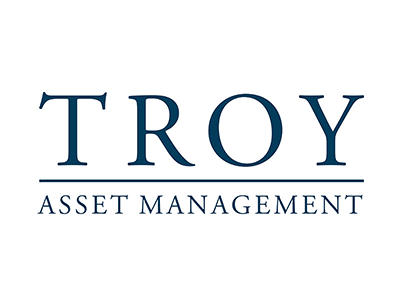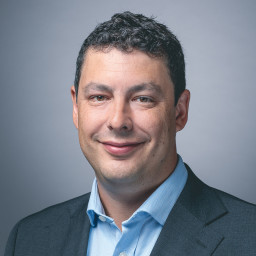Co-manager Sebastian Lyon is part-owner of Troy Asset Management so we think he's incentivised to perform
We like the simple philosophy behind this fund, with the potential for long-term growth and a focus on limiting losses in weaker markets
The fund has outpaced inflation since it launched in May 2001
This fund is on the Wealth Shortlist of funds chosen by our analysts for their long-term performance potential
How it fits in a portfolio
Troy Trojan aims to grow investors' money steadily over the long run, while limiting losses when markets fall, rather than trying to shoot the lights out and perform strongly at all times.
The fund tries to experience less ups and downs than the broader global stock market or a portfolio that's mainly invested in shares. As a result, it could form the foundation of a broad investment portfolio, bring some stability to a more adventurous portfolio, or provide some long-term growth potential to a more conservative portfolio.
Manager
Sebastian Lyon has managed this fund since its launch in 2001 and used the same investment philosophy that was founded when Lyon helped to set up Troy Asset Management. He’s also managed Personal Assets Trust since 2009 – this is an investment trust that’s invested similarly to Troy Trojan.
Lyon is also CIO (Chief Investment Officer) of Troy Asset Management. This takes up some of his time but he’s previously handed over some of the day-to-day company management responsibilities to capable colleagues. This leaves him to focus more of his time on investment management.
Lyon also has support from Charlotte Yonge, who was appointed as co-manager of the fund in April 2025. She joined Troy in 2013 and has worked with Lyon on the fund for a number of years. As co-manager, she’s jointly responsible for making investment decisions for the fund.
Lyon and Yonge also have support from Marc de Vos, who was previously an investment analyst in the team but has recently been promoted to a fund manager role. While de Vos doesn’t have official decision-making responsibilities, he contributes to finding ideas for the fund and to portfolio construction discussions.
Overall, we think the team at Troy is strong, capable and stable.
Process
Lyon and Yonge like to keep things simple, a quality we like. They aim to shelter investors' wealth just as much as grow it.
To do this, the fund is constructed around four 'pillars'. The first contains large, established companies the managers think can grow sustainably over the long run, and endure tough economic conditions. They’ve tended to focus on companies based in developed markets, such as the UK and US. This includes some of the world's best-known companies with highly recognisable brands, such as Unilever and Visa. Although the fund hasn’t invested much for several years, the managers have the freedom to invest in higher-risk smaller companies.
The managers increased the amount invested in shares recently, to 37% at the end of May 2025. They added to some shares they already owned and also invested in some new companies after share prices fell during the stock market volatility in April, caused by the tariff announcements in the US. They added LVMH, the global luxury goods company and L’Oreal, the world’s largest cosmetics company. The managers have liked both companies for some time and took the opportunity to invest at a lower share price. This is a great example of how the fund’s managed and the type of companies that the team like to invest in.
The team also sold investments in Becton Dickinson & Co and Proctor & Gamble. Becton Dickinson & Co has struggled since Covid and the team feel other investments offer better opportunities. Proctor & Gamble had performed well and they felt it no longer offered as much growth potential.
The rest of the fund is made up of investments that could bring some stability during more difficult markets. The second pillar is made from bonds. 26% of the fund is currently invested in US index-linked bonds, which could shelter investors if inflation remains higher than the long-term US central bank targets. The fund also invests 4% in UK inflation-linked gilts, taking the total for this bucket to 30%. The amount invested has reduced over the last 12 months to allow for the increased investments in shares.
The third pillar consists of gold-related investments, including physical gold, and accounts for 11% of the fund. This is roughly the same amount that was invested in gold 12 months ago. Gold can act as a safe haven during times of uncertainty, or perform well when inflation rises or if key global currencies weaken.
The final pillar is cash and short-dated government bonds, where 22% of the fund is held. Again, this amount is broadly similar to 12 months’ ago. However, within this bucket the team has recently moved some investments into Japanese government bonds. This is to have some investments in the Yen, the Japanese currency. The team thinks this might provide some additional shelter during a market wobble and it adds diversification.
While the fund contains a diverse range of investments, it’s concentrated. This approach means each investment can contribute significantly to overall returns, but it can increase risk.
Culture
We like that Troy's fund managers are dedicated to the same investment philosophy that was established two decades ago. The group has always been clear about the way its range of funds are managed, and the managers don't stray into overly complicated areas of investment markets. Wealth preservation is key, and each manager adheres to this mantra.
Lyon is a part-owner of Troy Asset Management, so we believe he's incentivised to perform, and for his funds and the business to do well over the long term. Other senior members of the group also own a part of the business, and we think this contributes to the stability and loyalty of the team.
While Troy is home to a small, close-knit team of investors, the group has recruited more junior members over the years to boost resource and ensure the funds are left in good hands as and when more senior members retire. Despite the team’s growth we think Troy has remained a very collegiate unit with all members able to have input.
ESG Integration
Troy Asset Management has been formally incorporating environmental, social and governance analysis (ESG) into its investment processes for a number of years, and it came from a strong starting point. It’s always been focused on the sustainability of returns and the fund managers are long-term investors.
In recent years Troy’s investment team has formalised the way they incorporate ESG and the way they talk to investors about it. ESG is integrated using a materiality-based approach, meaning the managers focus on the issues they deem to be most material. They also have access to third party ESG research.
Engagement and voting are the responsibility of the investment team. All votes are discharged, and usually cast in favour of management proposals unless the team believes investors’ interests are better represented by abstaining or voting against management. Their preferred course of action is to have dialogue with management ahead of casting a vote against. The firm publishes a summary of its ‘significant’ votes in its annual ‘Engagement and Voting Disclosure’ report, along with rationales for voting both in favour and against proposals. They also produce a quarterly Responsible Investment report, which includes voting and engagement statistics and case studies.
We believe ESG risks are comprehensively considered for all investments held in this fund, and that the ESG-related processes are robust. That said, this isn’t an exclusions-based or responsible investing fund, which means it can invest in any sector.
Cost
This fund has an ongoing annual charge of 0.88%, but we've secured HL clients an ongoing saving of 0.25%. This means you pay a net ongoing charge of 0.63%.
The fund discount is achieved through a loyalty bonus, which could be subject to tax if held outside of an ISA or SIPP. The HL platform fee of up to 0.45% per year also applies, except in the HL Junior ISA, where no platform fee applies.
Performance
The fund aims to achieve growth ahead of inflation (as measured by the UK retail price index) over the long run, which it’s done successfully since it launched in May 2001. It’s also performed better than the broader UK stock market, which we think is impressive for a more conservative fund. Over this period, the fund has risen 371.64%* compared with 293.18% for the FTSE All-Share.
It's also achieved this with less volatility than the market. But remember past performance isn't a guide to future returns.
Avoiding large losses has been an important characteristic of the fund and it’s tended to come into its own and hold up well in weaker markets, such as the bursting of the tech bubble in 2001-2002 and the global financial crisis in 2008. We saw this again in the first part of 2020 when global markets stumbled amid the coronavirus outbreak. The fund isn’t likely to keep up when share markets are performing strongly, but we expect this given its cautious approach. Importantly we expect it to provide some shelter when markets fall.
The fund lagged the broader UK stock market over the past 12 months, returning 7.27% compared with 9.35% for the FTSE All-Share. It outperformed inflation though, with the UK Retail Price Index (RPI) rising 4.27%.
Gold provided a good return for the fund, as its price has risen significantly since the start of October 2023.
The fund’s investments in shares were also positive, with shares in Visa, VeriSign and Unilever all performing well. Some other shares lost money though such as Diageo and Pernod Ricard.
The fund has been defensively positioned over the 12 months. In this context it’s not surprising that the fund hasn’t kept pace with the UK stock market. Although the increase in the amount invested in shares more recently is reducing this, the current amount invested in shares of 37% is lower than the long term average for the fund. The philosophy of the fund is to protect capital first and look to generate growth where possible.
In this context, the returns have been reasonable. And with inflation coming back closer to target in the UK, the fund has a greater chance of keeping pace or outperforming inflation going forward. But of course, there are no guarantees.
May 2020 To May 2021 | May 2021 To May 2022 | May 2022 To May 2023 | May 2023 To May 2024 | May 2024 To May 2025 | |
|---|---|---|---|---|---|
Troy Trojan | 7.03% | 5.24% | 0.10% | 4.23% | 7.27% |
UK Retail Price Index | 3.32% | 11.66% | 11.33% | 2.96% | 4.27% |
FTSE All Share | 23.13% | 8.27% | 0.44% | 15.44% | 9.35% |


